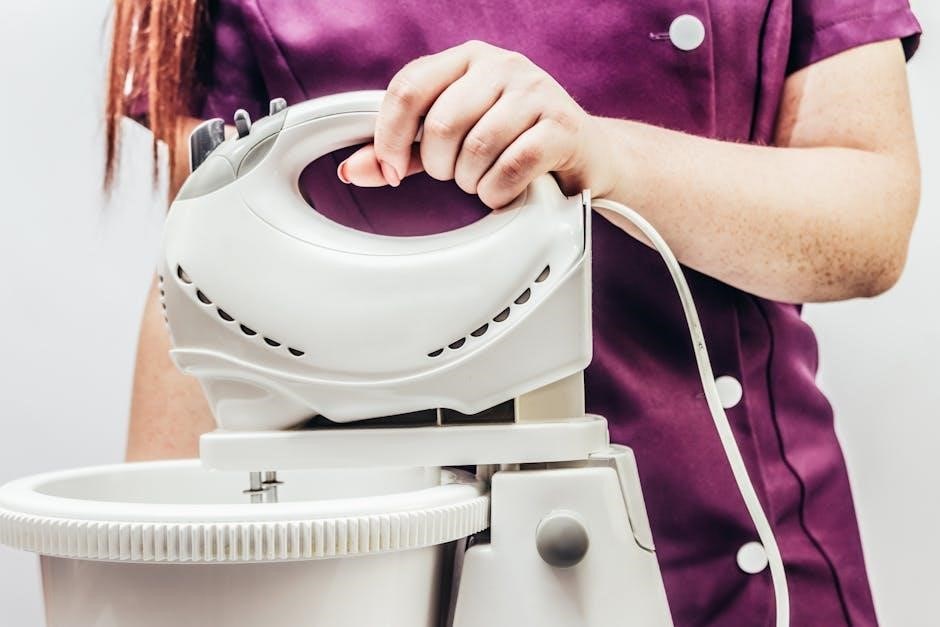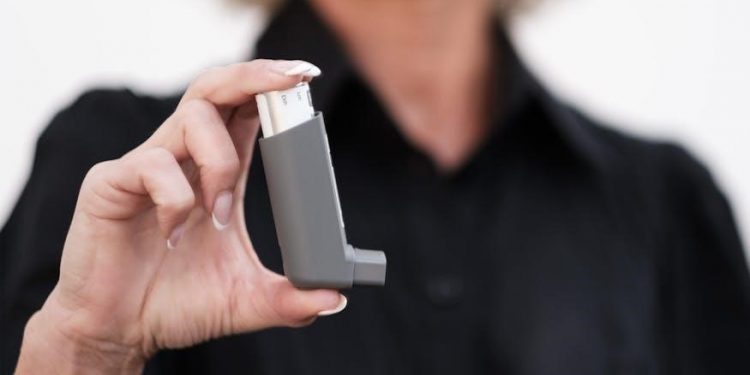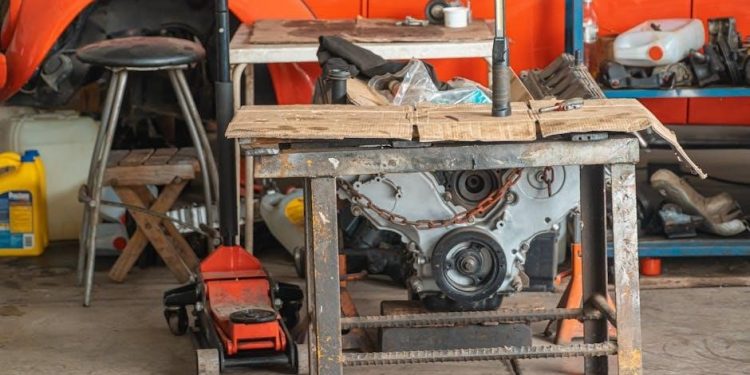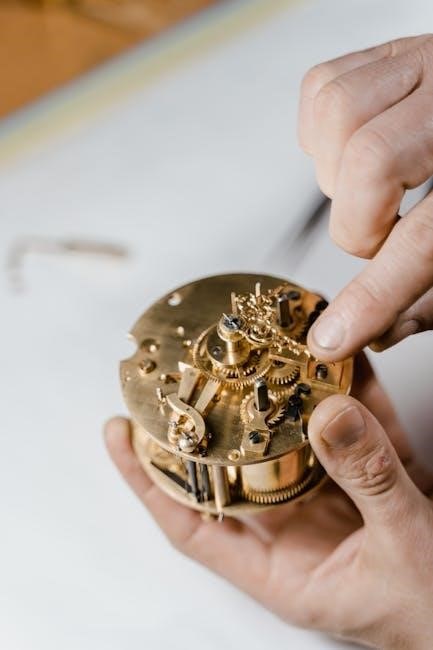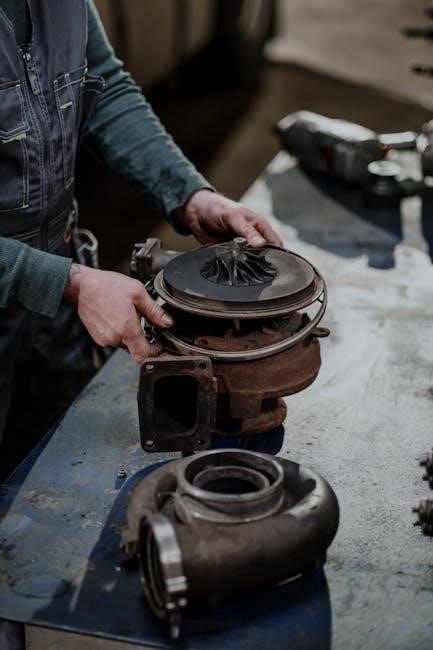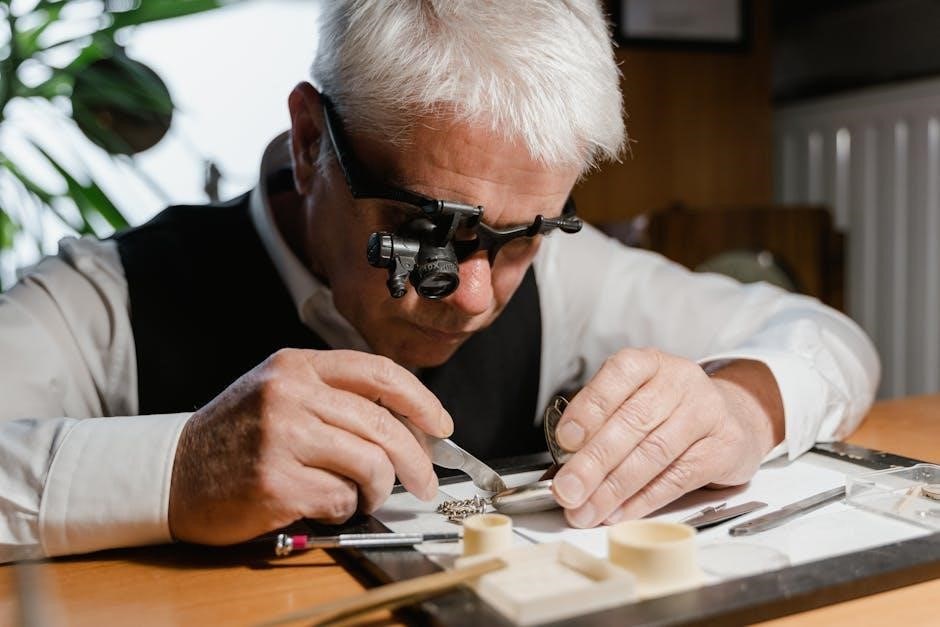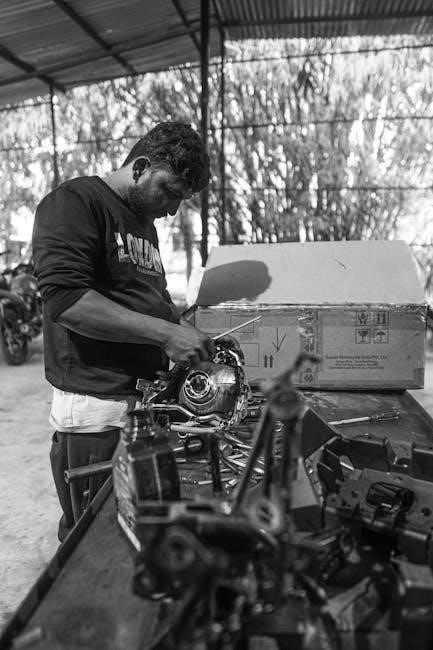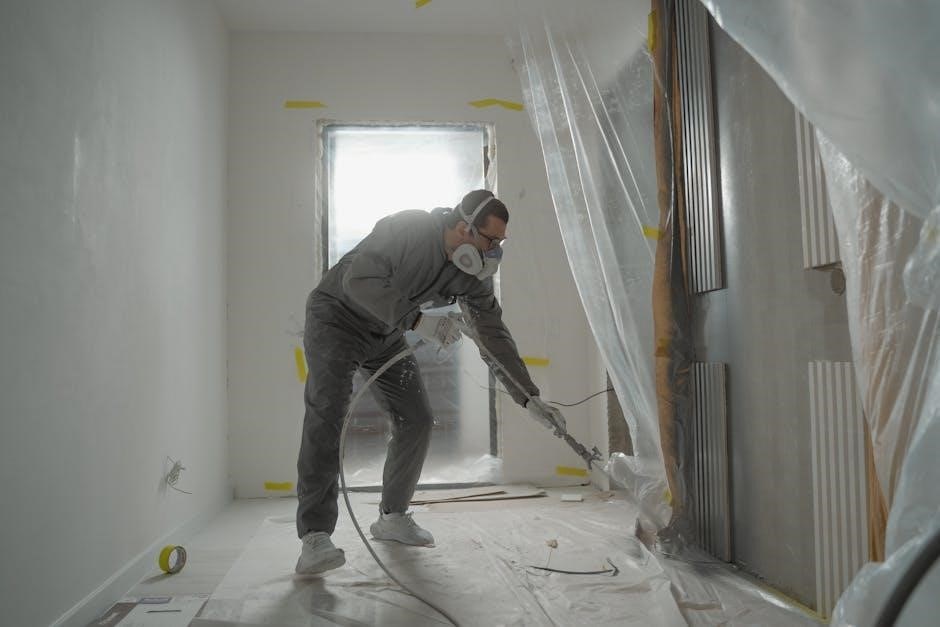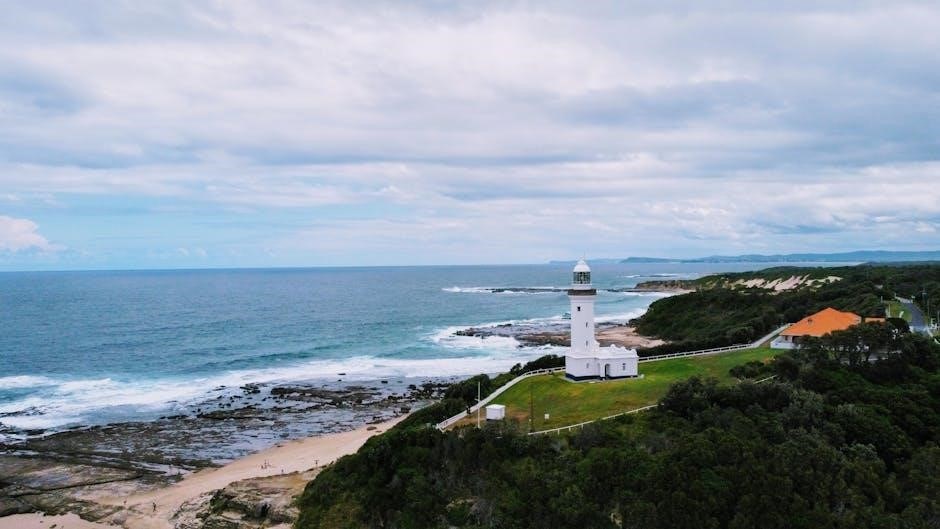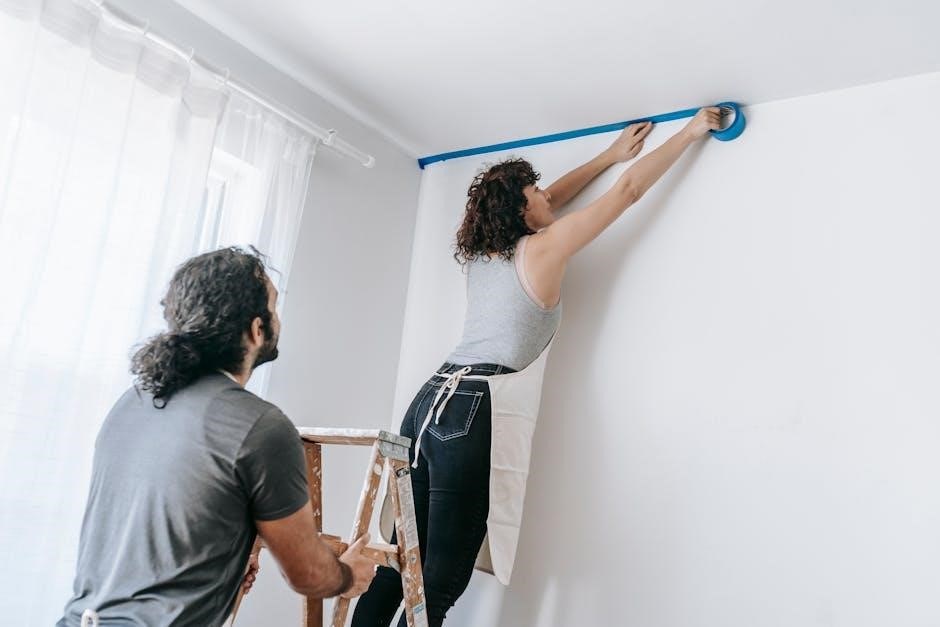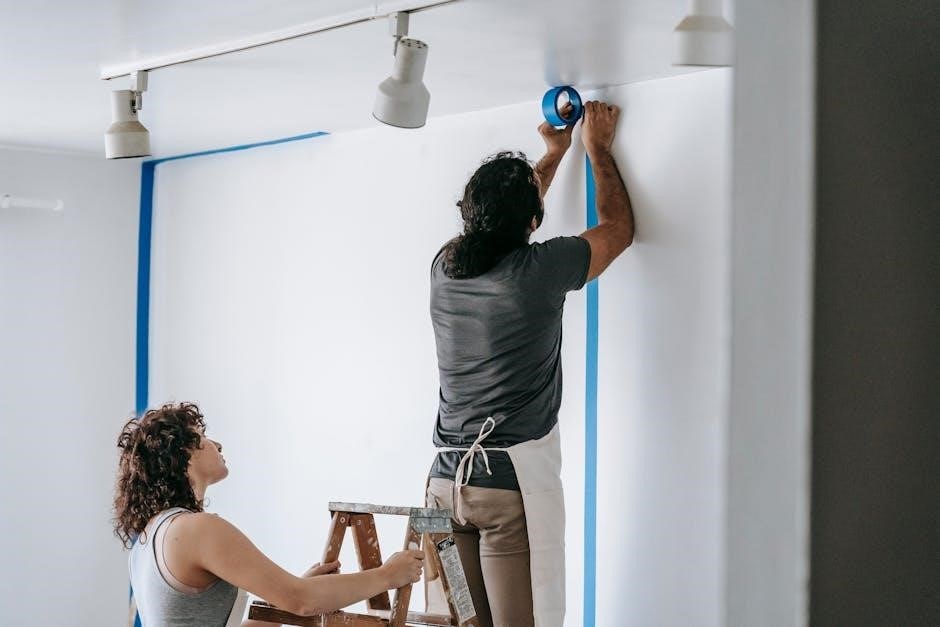The Nikon Speedlight SB-700 is a versatile and advanced flash unit designed for enthusiasts and professionals‚ offering superior lighting control and compatibility with Nikon cameras.
1.1 Overview of the SB-700 Speedlight
The Nikon Speedlight SB-700 is a high-performance flash unit designed for enthusiasts and professionals‚ offering advanced lighting control and compatibility with Nikon cameras. It integrates seamlessly with Nikon’s Creative Lighting System (CLS)‚ enabling wireless flash operation and creative lighting techniques. With its intuitive interface and robust features‚ the SB-700 delivers reliable results in various shooting conditions. Whether for portraits‚ events‚ or studio work‚ this flash unit provides exceptional versatility and ease of use‚ making it an essential tool for photographers aiming to enhance their lighting capabilities.
1.2 Key Features and Benefits
The Nikon Speedlight SB-700 offers advanced flash capabilities‚ including i-TTL for precise exposures and wireless operation for off-camera lighting. Its Manual Flash mode provides custom control‚ while the Creative Lighting System (CLS) enables complex lighting setups. Compatible with Nikon DSLR and mirrorless cameras‚ the SB-700 ensures seamless integration. The unit is lightweight‚ portable‚ and designed for durability‚ making it ideal for professional and enthusiast photographers. Its intuitive interface and customizable settings allow for tailored results. The SB-700 also supports repeating flash for creative effects and features a user-friendly manual available for download‚ ensuring optimal performance in various shooting scenarios.
1.3 Importance of Reading the User Manual
Reading the Nikon Speedlight SB-700 user manual is essential to unlock its full potential. It provides detailed insights into advanced features‚ modes‚ and customization options‚ ensuring proper usage and troubleshooting. The manual covers compatibility‚ firmware updates‚ and maintenance tips‚ helping users maximize the flash unit’s performance. By understanding the guide‚ photographers can avoid common issues and optimize their lighting setup for professional results.
Additionally‚ the manual offers step-by-step instructions for setting up wireless flash modes‚ adjusting settings‚ and resolving communication errors. It serves as a comprehensive resource for mastering the SB-700‚ making it indispensable for both enthusiasts and professionals seeking to enhance their photography skills with precise lighting control.
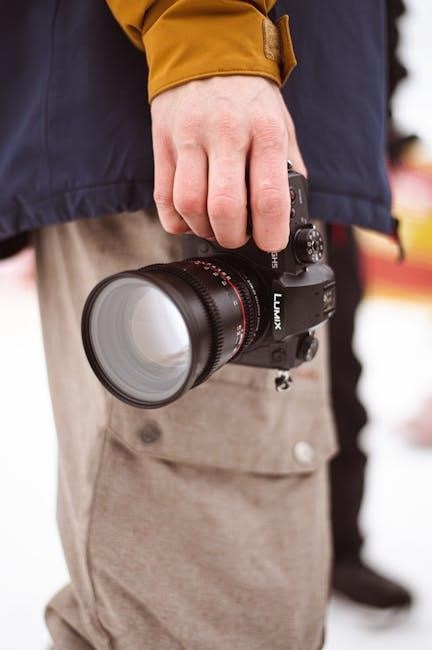
Design and Components of the SB-700
The SB-700 features a compact‚ rugged design with intuitive controls‚ including a rear LCD panel‚ mode buttons‚ and a bounce head for versatile lighting options.
2.1 External Components and Controls
The Nikon Speedlight SB-700 features a sleek and intuitive design with essential external components. The flash head is adjustable‚ allowing for rotation and tilt to achieve desired lighting effects. A power button and mode button are located on the rear for easy operation. The LCD screen displays settings and status information‚ while navigation buttons enable quick adjustments. The mounting foot ensures secure attachment to the camera’s hot shoe. Additional features include a ready light‚ test button‚ and a diffusion panel for softening light. These components provide seamless control and versatility for photographers of all skill levels.
2.2 Internal Components and Technology
The Nikon Speedlight SB-700 houses advanced internal components‚ including a precision flash tube‚ a high-voltage circuit‚ and a microprocessor for efficient flash control. Its internal technology features i-TTL flash exposure control‚ ensuring accurate lighting by communicating with Nikon cameras. The unit also includes a thermal cut-off sensor to prevent overheating during extended use. These components work together to deliver consistent and reliable flash performance‚ making it a versatile tool for photographers. The SB-700’s internal design supports wireless flash capabilities and compatibility with Nikon’s Creative Lighting System (CLS)‚ enhancing creative control and functionality.
Setting Up the SB-700 Speedlight
Setting up the SB-700 involves unboxing‚ attaching the flash to your Nikon camera‚ and installing batteries. Follow the manual for proper installation and initial configuration.
3.1 Unboxing and Initial Setup
Upon unboxing the Nikon Speedlight SB-700‚ you’ll find the flash unit‚ a stand‚ and protective caps. Inspect all components for damage. Read the user manual thoroughly before proceeding. Begin by mounting the flash on your camera’s hot shoe‚ ensuring it clicks securely into place. Turn on the camera and flash‚ then navigate to the camera’s flash settings to confirm synchronization. Perform a basic test shot to ensure proper functionality. Familiarize yourself with the controls and settings to prepare for advanced use.
3.2 Attaching the Speedlight to the Camera
To attach the Nikon Speedlight SB-700 to your camera‚ start by ensuring the camera’s hot shoe is clean and free of debris. Align the Speedlight’s mounting foot with the hot shoe‚ sliding it onto the connector until it clicks securely into place. Gently tighten the locking screw to ensure stability. For TTL functionality‚ ensure the Speedlight is fully seated and the camera is set to the correct flash mode. If using wireless operation‚ confirm the camera and Speedlight are set to the same channel. Always test the connection by firing a test flash to ensure proper communication.
3.3 Battery Installation and Management
Proper battery management is crucial for optimal performance of the Nikon Speedlight SB-700. To install batteries‚ ensure the flash unit is turned off. Use four AA-sized batteries‚ preferably alkaline or nickel-based‚ for reliable power. Insert the batteries into the compartment‚ aligning them correctly to avoid misconnection. Avoid mixing old and new batteries or different types. Clean the terminals periodically to prevent corrosion. Turn off the Speedlight when not in use to conserve battery life. Replace batteries when performance diminishes or if they show signs of wear. Always store spare batteries in a cool‚ dry place for extended shelf life.

Basic Operating Modes of the SB-700
The SB-700 offers three primary operating modes: i-TTL for automatic flash exposure‚ Manual for custom control‚ and Repeating Flash for creative effects in photography.
- i-TTL Mode: Automatically adjusts flash output for precise exposure.
- Manual Mode: Allows users to set flash power manually for tailored results;
- Repeating Flash: Fires multiple flashes at set intervals for dynamic effects.
4.1 i-TTL Mode for Automatic Flash
The i-TTL (Intelligent Through-The-Lens) mode on the Nikon Speedlight SB-700 offers automatic flash exposure control‚ ensuring precise lighting in various shooting conditions. This mode leverages the camera’s metering system to calculate the optimal flash output‚ simplifying photography for users. It automatically adjusts flash power based on the scene‚ delivering consistent results without manual adjustments. Compatible with Nikon DSLR cameras‚ i-TTL mode is ideal for beginners and professionals alike‚ providing seamless integration with Nikon’s Creative Lighting System (CLS) for advanced wireless lighting setups. It minimizes overexposure and underexposure‚ making it a reliable choice for dynamic lighting environments.
4.2 Manual Flash Mode for Custom Control
The Manual Flash Mode on the Nikon Speedlight SB-700 offers full control over flash output‚ allowing photographers to set the power manually between 1/1 to 1/128. This mode is ideal for creative lighting setups‚ enabling precise adjustment of light intensity to match specific scenes. Users can bypass automatic settings and define exact flash levels‚ ensuring consistent results. The SB-700’s manual mode is compatible with both Nikon DSLR and mirrorless cameras‚ supporting wireless operation through the Creative Lighting System (CLS). For detailed guidance‚ the user manual provides step-by-step instructions on configuring and troubleshooting manual flash settings.
4.3 Repeating Flash Mode for Creative Effects
The Repeating Flash Mode on the Nikon Speedlight SB-700 allows for multiple flash firings during a single exposure‚ creating unique stroboscopic effects. This mode is ideal for capturing motion trails or adding dynamic elements to images. Users can customize the number of flashes and frequency to achieve desired results. The mode is compatible with Nikon’s Creative Lighting System (CLS) and works seamlessly with both digital and 35mm SLR cameras. It’s a powerful tool for experimenting with light and creativity in various photography scenarios‚ offering precise control over flash output for artistic expression.
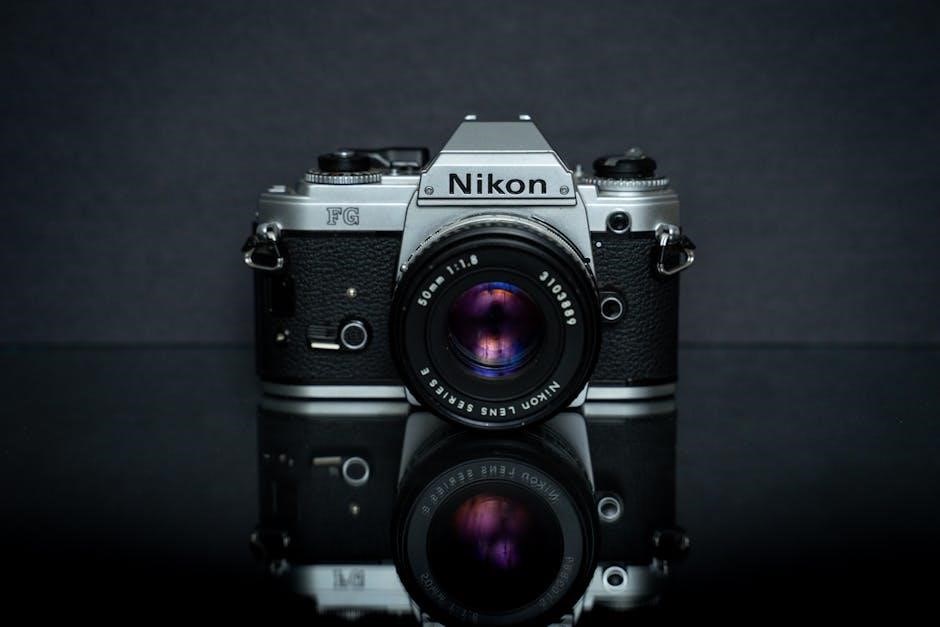
Advanced Flash Modes and Techniques
The SB-700 offers wireless flash‚ multi-flash unit control‚ and advanced sync speed options‚ enabling creative lighting setups and precise control over illumination in various photography scenarios.
5.1 Wireless Flash Mode for Remote Shooting
The Nikon Speedlight SB-700’s Wireless Flash Mode enables remote shooting‚ offering greater creative flexibility. It uses radio frequencies for reliable communication‚ eliminating line-of-sight restrictions. Photographers can control multiple flash units‚ synchronizing lighting across setups. This mode is ideal for complex lighting configurations‚ allowing precise control over flash power and timing. The SB-700 supports up to three groups‚ enhancing versatility. When paired with Nikon’s Creative Lighting System (CLS)‚ wireless operation becomes seamless. Ensure proper setup by consulting the user manual for optimal performance in various environments. This feature is a cornerstone of advanced lighting techniques‚ making it indispensable for professionals and enthusiasts alike.
5.2 Multi Flash Unit Control
The Nikon Speedlight SB-700 supports multi-flash unit control‚ enabling photographers to manage multiple flash units wirelessly. This feature is part of Nikon’s Creative Lighting System (CLS)‚ allowing for precise control over remote flashes. Users can assign flashes to different groups (A‚ B‚ C‚ D) and adjust their power levels individually or uniformly. The SB-700 can function as a master or remote unit‚ offering flexibility in complex lighting setups. Wireless communication via infrared ensures reliable synchronization and eliminates the need for cables. This capability enhances creativity‚ enabling photographers to achieve dynamic lighting effects in various environments.
Multi-flash control also allows for advanced lighting ratios‚ ensuring balanced illumination in scenes. Photographers can customize settings to suit their creative vision‚ making the SB-700 a powerful tool for professional and enthusiast photographers alike.
5.3 Sync Speed and Shutter Considerations
Understanding sync speed and shutter considerations is crucial for optimizing flash photography with the Nikon Speedlight SB-700. The sync speed refers to the maximum shutter speed at which the flash can fully illuminate the image without causing partial exposure. For the SB-700‚ the default sync speed is typically 1/250th of a second‚ but this can vary depending on the camera model. When using faster shutter speeds‚ photographers may encounter issues like ghosting or banding. To address this‚ the SB-700 supports High-Speed Sync (HSS)‚ allowing flash use at speeds beyond the sync limit. Properly setting the shutter speed and enabling HSS ensures balanced exposures in bright lighting conditions.
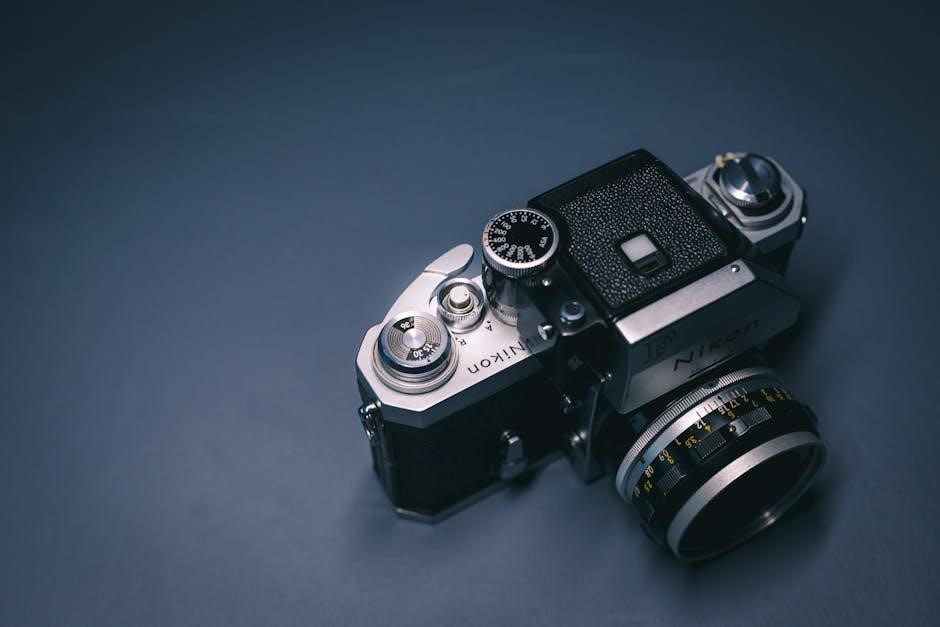
Customizing the SB-700 Settings
Customize the SB-700 by adjusting flash compensation‚ setting custom functions‚ and updating firmware for enhanced performance and personalized control over your flash photography experience effortlessly.
6.1 Adjusting Flash Compensation
Flash compensation on the Nikon Speedlight SB-700 allows precise control over the flash output‚ enabling photographers to balance lighting in various environments. Users can adjust the compensation in increments of +/-3 EV to achieve the desired exposure. This feature is particularly useful for enhancing or reducing the flash intensity to match the scene. Compensation settings can be accessed through the camera’s menu or directly on the Speedlight unit. When using wireless flash setups‚ flash compensation ensures consistent lighting across multiple units. Refer to the user manual for detailed steps on adjusting flash compensation for optimal results in your photography.
6.2 Setting Up Custom Functions
The Nikon Speedlight SB-700 allows users to customize functions to suit their photography needs. Access the custom functions menu via the Speedlight’s control panel. Here‚ you can adjust settings like flash compensation‚ sync modes‚ and wireless flash options. Custom functions enable precise control over lighting output‚ ensuring consistent results. Users can also save preferred settings for quick access during shoots. The SB-700’s compatibility with Nikon’s Creative Lighting System (CLS) further enhances customization‚ enabling advanced wireless flash control. Regular firmware updates may add new custom functions‚ improving performance and versatility for professional and enthusiast photographers alike.
6.3 Updating Firmware for Enhanced Performance
Regularly updating the firmware of your Nikon Speedlight SB-700 ensures optimal performance‚ compatibility‚ and access to the latest features. To update the firmware‚ visit the official Nikon website and download the most recent version. Connect the SB-700 to a compatible Nikon camera via the hot shoe‚ ensuring both devices have sufficient battery power. Access the camera’s menu to initiate the firmware update process‚ following on-screen instructions carefully to avoid interruptions. After completion‚ test the Speedlight to confirm functionality. Periodically checking for updates and backing up custom settings before updating is recommended for uninterrupted operation.
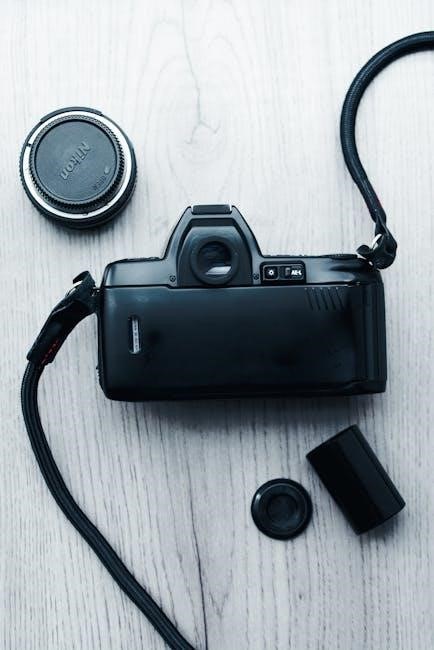
Nikon Creative Lighting System (CLS)
The Nikon Creative Lighting System (CLS) enhances flash photography by enabling wireless control of multiple Speedlights‚ offering advanced lighting options for creative and professional results.
7.1 Overview of CLS and Its Benefits
The Nikon Creative Lighting System (CLS) is a groundbreaking technology that enables advanced wireless flash control‚ offering unparalleled creativity and precision in lighting. Designed for both enthusiasts and professionals‚ CLS allows seamless communication between the Speedlight SB-700 and compatible Nikon cameras‚ enabling multiple flash units to be controlled remotely. This system enhances flexibility‚ allowing photographers to achieve complex lighting setups with ease. CLS also supports features like i-TTL flash control and wireless lighting‚ ensuring consistent and professional results; By simplifying the process of setting up and controlling external flash units‚ CLS empowers photographers to focus on their creative vision without technical limitations.
7.2 Setting Up Wireless Lighting with CLS
The Nikon Speedlight SB-700 seamlessly integrates with the Nikon Creative Lighting System (CLS)‚ enabling wireless flash control for enhanced creativity. To set up wireless lighting‚ designate the SB-700 as a master or remote unit. On the camera‚ navigate to the flash control menu and select the desired wireless mode. Assign channels and groups to ensure proper communication between units. Ensure line-of-sight between the master and remote flashes for reliable operation. Refer to the user manual for detailed steps on configuring channels‚ groups‚ and custom settings to optimize wireless lighting performance.
7.3 Advanced Wireless Flash Techniques
Advanced wireless flash techniques with the Nikon Speedlight SB-700 enable photographers to create sophisticated lighting setups. Using Nikon’s Creative Lighting System (CLS)‚ users can control multiple flash units wirelessly‚ ensuring precise illumination. Techniques include multi-flash synchronization‚ creative lighting patterns‚ and advanced light ratio control. The SB-700 can function as a commander or remote unit‚ allowing for complex lighting configurations. These methods enhance depth‚ dimension‚ and dynamic range in images‚ offering professional-grade results. By mastering these techniques‚ photographers can achieve stunning‚ customized lighting effects tailored to their creative vision.

Compatibility with Nikon Cameras
The Nikon Speedlight SB-700 is compatible with both Nikon DSLR and mirrorless cameras‚ including the Z series‚ ensuring seamless integration and optimal performance across various Nikon bodies.
8.1 Compatibility with Nikon DSLR Cameras
The Nikon Speedlight SB-700 is fully compatible with a wide range of Nikon DSLR cameras‚ ensuring seamless integration and advanced flash functionality. It supports Nikon’s i-TTL (Intelligent Through-The-Lens) flash control‚ providing precise and automatic flash exposure. The SB-700 works effortlessly with popular DSLR models such as the D850‚ D500‚ and D750‚ offering consistent performance. Its wireless capabilities also allow it to function as a remote or commander unit in multi-flash setups. This compatibility ensures photographers can leverage the SB-700’s advanced features across various DSLR bodies‚ making it a versatile tool for creative and professional applications.
8.2 Compatibility with Nikon Mirrorless Cameras
The Nikon Speedlight SB-700 is fully compatible with Nikon mirrorless cameras‚ ensuring seamless integration and advanced lighting control. It works effortlessly with Nikon’s Z-series mirrorless models‚ leveraging the Nikon Creative Lighting System (CLS) for wireless flash operation. The SB-700 supports unified flash control‚ allowing users to adjust settings directly from the camera menu. This compatibility enhances creativity and convenience‚ making it an ideal choice for mirrorless photographers seeking professional-grade lighting solutions. Proper communication between the SB-700 and mirrorless cameras is ensured through Nikon’s reliable i-TTL flash system.
8.3 Ensuring Proper Camera-Speedlight Communication
To ensure proper communication between the Nikon Speedlight SB-700 and your camera‚ always use compatible modes and settings. Update the firmware on both devices for optimal performance. Enable flash control on the camera and set the Speedlight to the correct wireless or wired mode. Clean the contacts on the Speedlight and camera to maintain a stable connection. For wireless operation‚ use the Nikon Creative Lighting System (CLS) and avoid physical obstructions. Regularly check for firmware updates and refer to the user manual for specific compatibility guidelines. Proper setup ensures seamless operation and reliable results.

Maintenance and Care of the SB-700
Regularly clean the SB-700 with a soft cloth and store it in a dry‚ cool place to maintain performance. Inspect for damage and wear to ensure longevity.
9.1 Cleaning the Speedlight and Its Components
Regular cleaning of the Nikon Speedlight SB-700 ensures optimal performance and longevity. Use a soft‚ dry cloth to wipe the exterior‚ avoiding harsh chemicals or abrasive materials. For the light emitter and battery compartment‚ gently remove dust with a cotton swab or compressed air. Never touch the flash surface with bare hands‚ as oils can damage the coating. If necessary‚ lightly dampen the cloth with water for stubborn marks‚ but ensure all components are dry before use. Proper maintenance prevents dust buildup and maintains the unit’s reliability.
- Use a soft‚ dry cloth for exterior cleaning.
- Gently clean the light emitter and battery area with a cotton swab.
- Avoid touching sensitive surfaces to prevent oil residue.
- Ensure all parts are dry before operation.
9.2 Storing the SB-700 Properly
To maintain the performance and longevity of the Nikon Speedlight SB-700‚ proper storage is essential. Always store the unit in its original packaging or a protective case to prevent scratches and damage. Keep it in a cool‚ dry place‚ avoiding extreme temperatures and humidity. Before storage‚ ensure the flash is turned off and batteries are removed to prevent corrosion. Clean the unit thoroughly and inspect for any damage. For extended storage‚ consider using silica gel packets to absorb moisture. Avoid stacking heavy objects on top of the Speedlight to preserve its structural integrity.
9.3 Checking for Damage and Wear
Regularly inspect the Nikon Speedlight SB-700 for signs of damage or wear to ensure optimal performance. Check the flash head for misalignment or physical damage‚ and examine the mounting foot for secure attachment. Verify that all buttons and dials function smoothly without sticking. Look for heat damage‚ such as discoloration or warped components‚ which may indicate overheating issues. Also‚ inspect the battery compartment for corrosion and ensure the electrical contacts are clean. Finally‚ check the LCD screen for cracks or faded displays. Addressing these issues promptly can prevent further damage and maintain reliability.
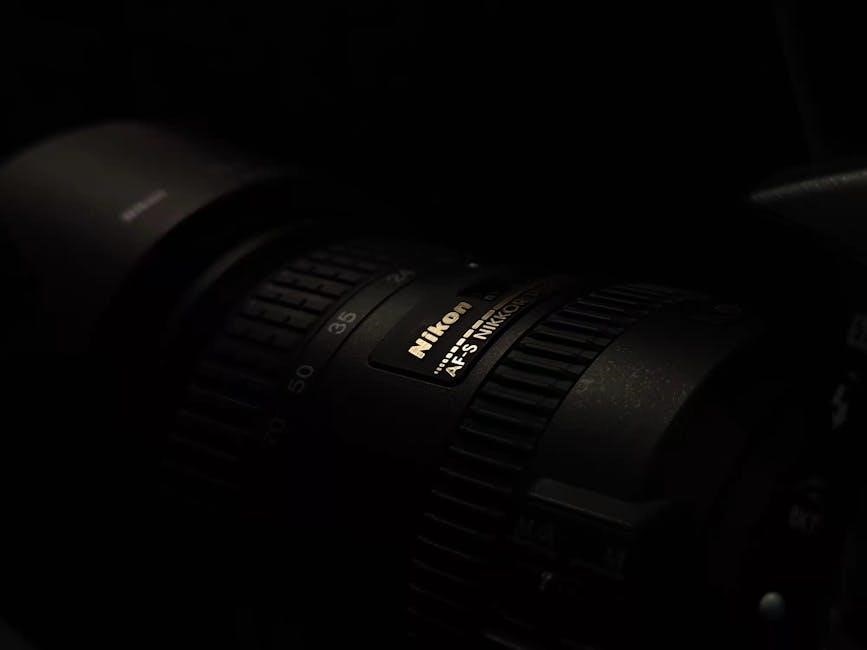
Troubleshooting Common Issues
Troubleshooting the Nikon Speedlight SB-700 involves addressing issues like flash misfires‚ battery drain‚ or communication errors. Refer to the user manual for solutions or contact Nikon support.
10.1 Flash Not Firing or Misfiring
If the SB-700 flash fails to fire or misfires‚ check the power source first. Ensure batteries are installed correctly and have sufficient charge. Verify that the flash is turned on and properly attached to the camera hot shoe. Loose connections or incorrect settings may cause issues. Review the camera and flash settings to ensure they are in sync. If problems persist‚ reset the flash or update its firmware. Consult the user manual for troubleshooting steps or contact Nikon support for assistance. Regular maintenance and proper storage can prevent such issues. Always refer to the manual for detailed diagnostics.
10.2 Battery Life and Charging Problems
Battery life and charging issues with the Nikon Speedlight SB-700 can arise due to improper handling or wear. Monitor battery levels via the LCD panel and replace or recharge them when low. Ensure the battery compartment is clean and free of dirt or corrosion. If charging problems occur‚ check the charger’s functionality and verify that batteries are compatible. Avoid overcharging‚ as it can reduce battery lifespan. For prolonged storage‚ remove batteries to prevent leakage; If issues persist‚ consult the user manual or contact Nikon support for assistance.
10.3 Communication Issues with the Camera
Communication issues between the Nikon Speedlight SB-700 and the camera can occur due to improper connections or outdated firmware. Ensure the flash is securely attached to the hot shoe and the camera is set to the correct flash mode. If problems persist‚ check the firmware version on both the Speedlight and camera‚ updating if necessary. Clean the hot shoe contacts and battery terminals to eliminate dirt or corrosion. Refer to the user manual for troubleshooting steps or contact Nikon support for assistance. Regular maintenance and updates help maintain reliable communication between devices.

Resources for Further Learning
Visit the Nikon Download Center for the official SB-700 user manual and firmware updates. Explore online tutorials‚ community forums‚ and Nikon support for enhanced learning and troubleshooting.
11.1 Official Nikon SB-700 User Manual Download
The official Nikon Speedlight SB-700 user manual is available for download on Nikon’s website and other trusted sources. This comprehensive guide provides detailed instructions for setup‚ operation‚ and troubleshooting. It covers advanced features like wireless flash modes and custom functions. The manual is free to download in PDF format‚ making it easily accessible for users. By referring to the official manual‚ photographers can unlock the full potential of the SB-700‚ ensuring optimal performance and creative control in various lighting scenarios. Downloading the manual is highly recommended for both beginners and experienced users.
11.2 Nikon Support and Customer Service
Nikon provides comprehensive support and customer service for the Speedlight SB-700‚ ensuring users can resolve issues and maximize their flash unit’s potential. The Nikon Support website offers dedicated resources‚ including troubleshooting guides‚ FAQs‚ and contact options. Users can reach Nikon’s customer service team via phone‚ email‚ or live chat for personalized assistance. Additionally‚ Nikon’s global network includes regional support centers‚ providing localized help. The support team is equipped to address technical queries‚ repair requests‚ and general inquiries‚ ensuring a seamless experience for SB-700 owners. This robust support system underscores Nikon’s commitment to customer satisfaction and product reliability.
11.3 Online Tutorials and Community Forums
Online tutorials and community forums provide invaluable resources for mastering the Nikon Speedlight SB-700; Platforms like YouTube and Nikon’s official website offer step-by-step guides and video tutorials. Community forums such as Nikonians and DPReview allow photographers to share tips‚ ask questions‚ and learn from experts. These resources are especially useful for troubleshooting and exploring advanced techniques. Additionally‚ Nikon’s support page provides access to firmware updates and user manuals‚ ensuring users stay informed and up-to-date with the latest features and improvements for the SB-700.




























